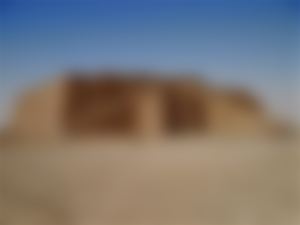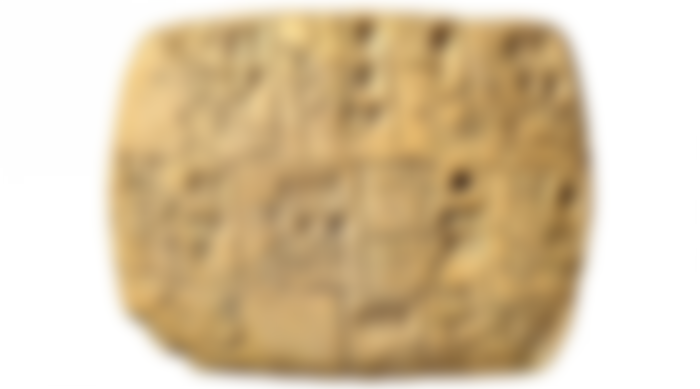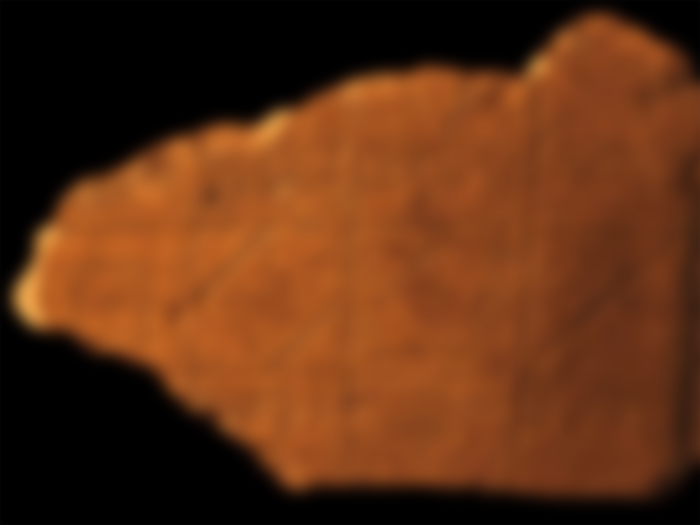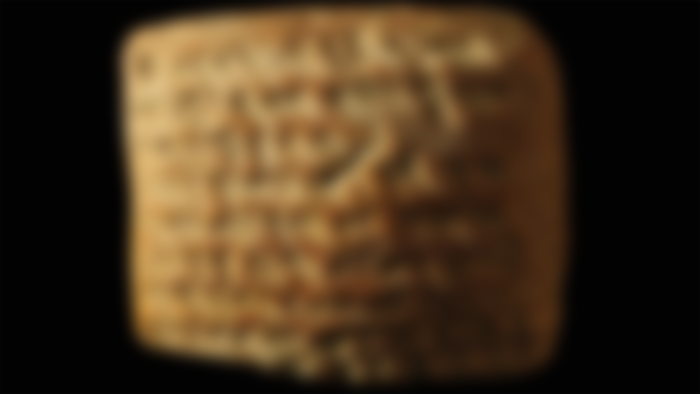The Mesopotamian civilization is one of the wonders of the ancient world. If you list all the ancient civilizations of the world, this civilization will occupy the top position. It is like a history concentrated on the twists and turns of civilization, an epic of the rise and fall of human history. For various reasons, the word of civilization has been written in golden letters in the pages of history. Even today, people's curiosity has not waned. Today's article will talk about the history of this civilization.
Naming and stage
The word Mesopotamia originates from the Greeks. The word ‘meso’ in ancient Greek meant ‘middle’ or ‘in’ and the word ‘potamos’ meant ‘river’. The word 'mesopotamia' originates from the word 'mesopotamia', which means 'located in the river'. Mesopotamia was the fertile valley between the two great rivers, the Euphrates and the Tigris. In ancient times it was called a 'bi-river country'. The stages of Mesopotamian civilization were four in total; Sumerian, Babylonian, Assyrian and Chaldean.
The first inhabitant
Although people first settled in the foothills of Taurus and Mount Zagres, they moved to southern Mesopotamia around 9000 BC. The first settlement was formed in this direction. There were no stones or metals in existence. However, due to its location in the river basin, the soil was unusually fertile. So the inhabitants of the time chose the southern part of Mesopotamia for agriculture. By the 6th millennium BC, the Mesopotamians were involved in cattle and goat farming as well as agriculture. As a refuge, they relied on hand-built huts. The raw materials for building the hut were plants, weeds and fertile river soil growing along the wetlands.
They had to lose their homes and livestock due to repeated floods. Attacks by lions and wild boars also caused extensive crop damage. Yet they did not give up. Together, shoulder to shoulder, they tried to prevent the catastrophic floods through the embankment, irrigated the fields, and built high walls for protection. By struggling in this way, they have survived in a hostile environment.

Agriculture in ancient Mesopotamia; Image Source: imgur.com
Economic condition
Agriculture, animal husbandry, and the textile industry kept Mesopotamia's economy afloat until the 3rd millennium BC. At that time, date palm was considered as the main fruit tree. They called the date palm a 'tree of life'. Miscellaneous use of date palms was at the peak of popularity. Flour and bread were made from dates, palm kernels were used as fuel, baskets and ropes were made from the bark of date palms. And the yield of the date palm at that time can be called 'bumper yield'.
Each date palm holds up to 50 kilograms of dates per year. The quality of cloth in southern Mesopotamia was so good that it gained a reputation not only in the country but also abroad. The inhabitants collected metal, wood and stones from their neighbors in exchange for food grains, dates and wool. With clay they used to meet the daily requirement of utensils like buckets, boxes, pipes etc. In the fourth millennium BC, artisans first mastered the use of gold and copper, then extended their hand to bronze. According to history, the Sumerians were the first to establish a city-centered trade system.

Date orchards along the Euphrates River; Image Source: agricoolaboo.com
Let's fly to the biggest city
The Sumerians spread their influence throughout Mesopotamia around 3,000 BC. Although their states consisted of the cities of Iridu, Nippur, Lagash, Uruk and Kish, there was no central government system. All cities enjoyed equal power and opportunity. The flying city played an important role in the urbanization and city management of that time. Mesopotamia was the largest city in the world at that time, covering an area of 6,000 square meters. Not only in size, but also its population was around 60,000-70,000. They enriched themselves by exporting agricultural products. The city is mentioned in the ancient epics Gilgamesh and in the Bible. Along with Mesopotamia, this ancient city has also become part of civilization.

Classification
Mesopotamian sociology describes a clear hierarchy. Most of the privileges were enjoyed by the aristocratic families and priests. There were many slaves to serve them. One of their favorite hobbies was collecting silver for money. The most miserable condition was that of slaves. They were so scared that they did not even have the courage to look at their master. They were employed in aristocratic families and temples. Those who were taken prisoner of war were basically enslaved.
The introduction of high interest rates has existed ever since. The rich always kept the peasants and artisans in debt. The misery of the poor was not over then. Some would carry the burden of debt for the rest of their lives. If he could not repay the loan, his whole family would have to be enslaved by the moneylender. Those who did not have land used to lease the land of the rich. In return, the landowner had to pay half of the crop and two-thirds of the orchard. In this way, with the development of agriculture, animal husbandry and textile industry, classification was created in the society.
The oldest state
The state was founded in Mesopotamia soon after the emergence of class society. Almost every city was a self-sufficient state. There were guards, bureaucrats, executioners etc. employed. They used to oppress innocent people. The kings of the city-states were at war with each other. If the war was won, the conquered city would be captured or destroyed. And the inhabitants of the city were taken as prisoners of war and made slaves.
The battle of Mesopotamia in the artist's imagination; Image Source: medium.com

Governance
The name that shines like a star in the Mesopotamian regime is Hammurabi, the emperor of the Babylonian Empire. He was in power for 42 long years from 1792-1850 BC. He built up a huge army by exploiting the wealth of Babylon. He cleverly used the existing strife between the kings of the neighboring states to his advantage. Hammurabi's pair had a fair share of cunning. He used to occupy other urban states by forming alliances with powerful states from among the various conflicting states. Then, realizing the opportunity, he would jump on his ally and loot everything.
Then there would be no one to oppose. Thus, Emperor Hammurabi subdued the whole of Mesopotamia with the help of clever intellect and clever tactics. He expanded his empire and discipline. The rule of law was also made during the reign of Emperor Hammurabi, known in history as the 'Hammurabi Code'.

Statue of Emperor Hammurabi; Image Source: keywordbasket.com
In this Hammurabi Code there was a specific punishment for each important wrong. Every citizen of Babylon and its small states had to abide by that policy. This policy was carved in stone to make it a permanent document. Some of these laws were,
If a person steals the temple or the emperor's property, he will be put to death. The same punishment is allotted for those who have stolen goods.
If a person steals someone's slave, he will be put to death.
If a fugitive slave is given shelter, his only punishment is death.
If a person is in debt to a person, his wife, son, or daughter will be forced to live in slavery to that person for three years.
The members of the court recorded about 272 such laws and submitted them to the king. The Hammurabi Code, one of the oldest laws in history, came into force throughout Babylon when the laws were approved after final verification and selection.

Hammurabi Code; Image Source: blogs.lse.ac.uk
Scripting
The inscription appeared in Mesopotamia in the 4th millennium BC. Since there was not as much papyrus here as in ancient Egypt, writing had to be done on clay. The scribes used to take the help of clay clay in that case. Small slates or clay-plates were carefully made from clay. To strengthen the soil, the fruit was dried in the sun or burned in the fire. In Mesopotamia, writing was done by drawing at the very beginning of the script. About a thousand signs were in circulation then. The letters cut on the ground with a sharp stick looked like pegs or wedges. Each letter was made up of a number of wedge-shaped symbols. That letter would express a whole word, or a syllable. These are called cuneiforms.
Later, experts deciphered the manuscript and found much unknown information about Mesopotamian civilization. The policy of Hammurabi rule carved in stone was also written in this cuneiform. However, hieroglyphics were quite complex for transactional or practical purposes.
The Phoenicians found a way out of this problem by inventing 22 consonants. In this case, they used the experience of the Egyptian script. This is because the symbols used by the Egyptians not only meant words, but also different sounds. From the discovery of the letters to the development - the whole lorry was pulled by the Phoenicians. This made communication easier.

Sumerian cuneiform; Image Source: smarthistory.org
Knowledge-science practice
Mesopotamia made great strides in the practice of science. In this case, they were many times ahead of the contemporary civilization. Babylonian priests observed the heavens from a lofty tower. Mathematicians of that time could calculate the exact time of solar and lunar eclipses. The first calendars were introduced in the Babylonian civilization. 360 ° Angle was discovered by the Assyrians.
Dividing the earth into latitudes or longitudes or counting the weeks in seven days, the credit for these discoveries goes only to the Mesopotamians. Archaeological excavations have uncovered a textbook on school-textual mathematics. Various mathematical problems have been mentioned there. For example, calculations of crops produced in different sizes, arithmetic problems of interest-calculation, how many people it would take to build four reservoirs of different depths on the slopes of the mountains, etc.

The arithmetic of today's age was also prevalent in that era. The predominance of arithmetic has been noticed in their mathematics. Extensive use of arithmetic and geometry has been reported in khalkata, barn construction and other government works. They also knew the rules of using square root, cube root, cube number, square number, inverse number, quadratic equations.

Mathematical problems of Babylonian civilization; Image Source: sciencemag.org
The contribution of Mesopotamia to ancient astronomy is undeniable. The Greeks used their acquired knowledge to keep the wheel of development of their civilization in motion. They were the first to use mathematics to determine the motions of the moon, sun or planets and stars. It acted as an influencer in the development of astronomy and astrology. The calendar was created by observing the movements of planets and stars.
The length of the year was measured and the time of planting was determined by determining the seasons - both in the observatories. When they get out of the image of the flat earth, they first start thinking, 'the earth is round'. The Mesopotamians are also credited with inventing the zodiac or water clock of the present age.
Copper was the first metal extracted from ore in the history of the world. This method was introduced by the Sumerians around 5,000 BC. Improved, bronze is made by mixing tin with it. The Mesopotamians invented the first wheel on earth. However, the wheels were not designed to be used for transportation, but to make important tasks such as irrigation systems, canal digging, and building construction easier and less time consuming.
Literature
The Mesopotamians wrote literature in their own language almost a thousand years before the Iliad and the Odyssey of the legendary epic poet Homer. The language they used to compose literature was called 'Hematic'. The world's oldest epic 'Gilgamesh' is written in this language. The story revolves around King Gilgamesh and his friend Enkidu in the ancient Mesopotamian city of Uruk. The epic Gilgamesh was written with the desire to lose death and immortality.
The main theme of the epic is the search for heaven, earth, hell, gods and immortality. Above all, it reveals the interrelationships of Mesopotamian urban life, trade, and literature. The fact that people at that time preferred imagination and miracles can be inferred from reading Gilgamesh. In addition to Gilgamesh, some religious literature has been found in Mesopotamia, whose main preoccupation is supernatural thought.

King Gilgamesh; Image Source: wsj.com
Architecture
The Mesopotamian civilization was first founded by the Sumerians. As civilizations developed on the banks of the Tigris and Euphrates rivers, they took advantage of the clay. During the reign of the Assyrian emperors, high places in the city were chosen for the construction of palaces. The fort wall was surrounded by palaces. As soon as you came in front of the entrance of the wall, you would see a huge stone statue. The shape of the statues was also a little strange in nature. Huge wings pressed on human head, bull body and back. Like a creature created from a combination of man, bull and bird. The stone slabs on the walls were replaced by stone carvings called reliefs. The sculptures carved in relief evoke the legends of war heroes or goddesses. At that time, the emperors also wanted to make the story of their heroism visible to the stone.

A picture of the Assyrian king's lion carved in relief; Image Source: factsanddetails.com
Jigurat was one of the best examples of ancient Mesopotamia. It is basically a pyramid-like high religious structure. The ruling class of the society built this establishment to prove themselves more religious than the priests. Due to their initiative and efforts, Jigurat was established in all major cities of Mesopotamia. The Babylonian and Assyrian emperors followed in the footsteps of the Sumerian rulers, who founded the Jigurat. Evidence suggests that the first Jigurat was built around 300 BC. It was considered the 'junction of heaven and earth'.

Jigurat still survives in Iraq; Image Source: realismjournal.com
Ishtar's arch was the main entrance to the city of Babylon. The gate was decorated with bright blue bricks depicting bulls, dragons and lions. It was built during the reign of Emperor Nebuchadnezzar II, dedicated to Ishtar, the goddess of fertility, strength, love, war and sex in ancient Mesopotamia. The dragon and bull at the gate basically refer to Arduk and Adad. Its roof and doors are made of cedar.

Ishtar's arch; Image Source: mozfiles.com
The empty garden of Babylon or the hanging garden was one of the Seven Wonders of the Ancient World. It is thought that King Nebuchadnezzar built this great architecture in 600 BC in the Euphrates River basin to alleviate the loneliness of his empress. About four thousand workers were involved in the construction of this largest flower garden. However, the park was not floating in the air at all. Inherent in this was technical skill. The garden was built on an artificial hill made of soil in the desert. The whole artistic work of the garden had a touch of highly well-planned science and mathematics. However, there is a lot of controversy about this hanging garden. According to many historians, this is mere imagination. Again, according to many, it did exist, but not in Babylon. Was in the Assyrian city of Nineveh.
The hanging garden of Babylon in the artist's brush; Image Source: blog.stylewe.com
Religion
The Mesopotamians were very religious. The same deity has been worshiped at different stages, but under different names. For example, the goddess Ishtar was known among the Sumerians as 'Inana'. They believed that different gods and goddesses were responsible for managing different things. Such as Ereshkigal or Irkala, the ruler of Patalpuri, Shala, the goddess of grain and sympathy, Geshtinama, the goddess of fertility, Kishar, the controller of the world, etc.
One has to wonder today how this ancient Mesopotamian civilization has long nurtured the tasteful ideas of democracy, science and architecture. They are the first to build organized democracy and the proper use of law enforcement. At the same time, they have given the world the logistics of science and architecture. The contribution of ancient Mesopotamia to the development of current affairs is undeniable.
This article is in English. It is about the history of Mesopotamian civilization.
References:
1. Mesopotamia
2. https://www.history.com/news/hanging-gardens-existed-but-not-in-babylon
3. https://www.bbc.com/culture/article/20150302-ancient-babylons-greatest-wonder
4. https://www.ancienthistorylists.com/mesopotamia-history/fascinating-facts-ancient-mesopotamia/
5. https://www.metmuseum.org/toah/hd/uruk/hd_uruk.htm
6. Hammurabi
Featured Image: wallpapercave.com













Mesopotamia, the land between rivers. Many things about history and civilization started there